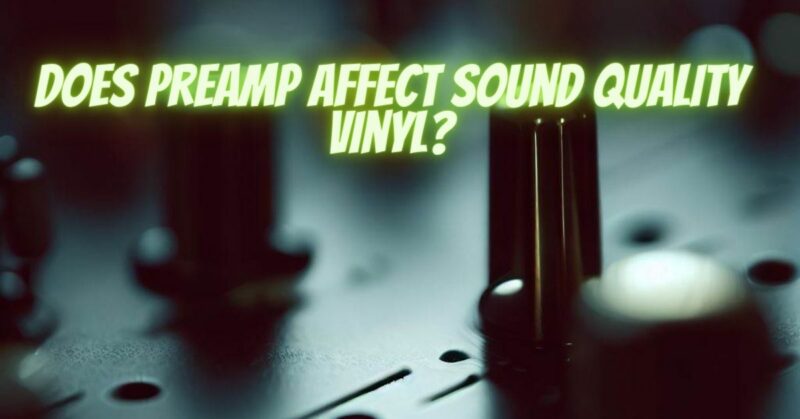When it comes to vinyl playback, every component in the audio chain plays a crucial role in shaping the overall sound quality. Among these components, the preamp, also known as a preamplifier or phono stage, holds a significant position. In this article, we delve into the question of whether a preamp affects the sound quality of vinyl and explore the factors that contribute to its impact on the vinyl listening experience.
- Amplification and Signal Integrity:
One primary function of a preamp is to amplify the low-level phono signal generated by the turntable’s cartridge. The quality of amplification can have a noticeable impact on the overall sound quality. A well-designed preamp with high-quality components can provide clean, accurate amplification, preserving the integrity of the audio signal. A preamp that introduces minimal noise, distortion, and coloration ensures that the nuances, dynamics, and tonal balance of the music are faithfully reproduced, resulting in a more engaging and immersive vinyl listening experience.
- RIAA Equalization and Frequency Accuracy:
Vinyl records are mastered with a specific equalization curve known as the RIAA (Recording Industry Association of America) curve. This curve compensates for the technical limitations of the vinyl format and ensures accurate sound reproduction. A preamp incorporates RIAA equalization circuitry to apply the inverse of the RIAA curve to the phono signal, restoring the frequency response of the original recording. The accuracy of the RIAA equalization in a preamp plays a critical role in faithfully reproducing the tonal balance, dynamics, and detail of the music recorded on vinyl.
- Noise Reduction and Signal Transparency:
Vinyl records are susceptible to various types of noise, including surface noise, clicks, and pops. A well-designed preamp incorporates features to minimize these unwanted artifacts. Through shielding techniques, quality circuitry, and grounding schemes, a preamp reduces electrical and environmental noise, resulting in a cleaner and more transparent audio signal. By reducing noise and preserving signal integrity, a preamp unveils the true musical details and subtleties present in the vinyl, enhancing the overall clarity and fidelity of the sound.
- Cartridge Compatibility and Impedance Matching:
Different turntable cartridges have unique electrical characteristics, including output levels and impedance. A preamp with adjustable gain settings and impedance options ensures compatibility with a wide range of cartridges. Proper matching of cartridge impedance with the preamp’s input impedance minimizes signal loss and distortion, allowing for optimal signal transfer. A well-matched preamp-cartridge combination ensures accurate sound reproduction and maximizes the potential of your vinyl playback system.
- Component Quality and System Synergy:
The overall quality of the preamp, as well as its synergy with other components in the audio system, also impact the sound quality of vinyl. A high-quality preamp that complements the characteristics of your turntable, amplifier, and speakers can result in a cohesive and balanced sonic presentation. The synergy between components ensures that each element of the audio chain works harmoniously, maximizing the potential of your vinyl playback and delivering a captivating listening experience.
Conclusion:
The preamp indeed has a significant impact on the sound quality of vinyl playback. Its amplification capabilities, accuracy in RIAA equalization, noise reduction features, compatibility with cartridges, and synergy with other system components all contribute to the overall fidelity and enjoyment of vinyl records. By investing in a quality preamp and ensuring its proper integration within your turntable setup, you can unlock the full potential of your vinyl collection, experiencing the rich, warm, and immersive sound that vinyl enthusiasts cherish.


